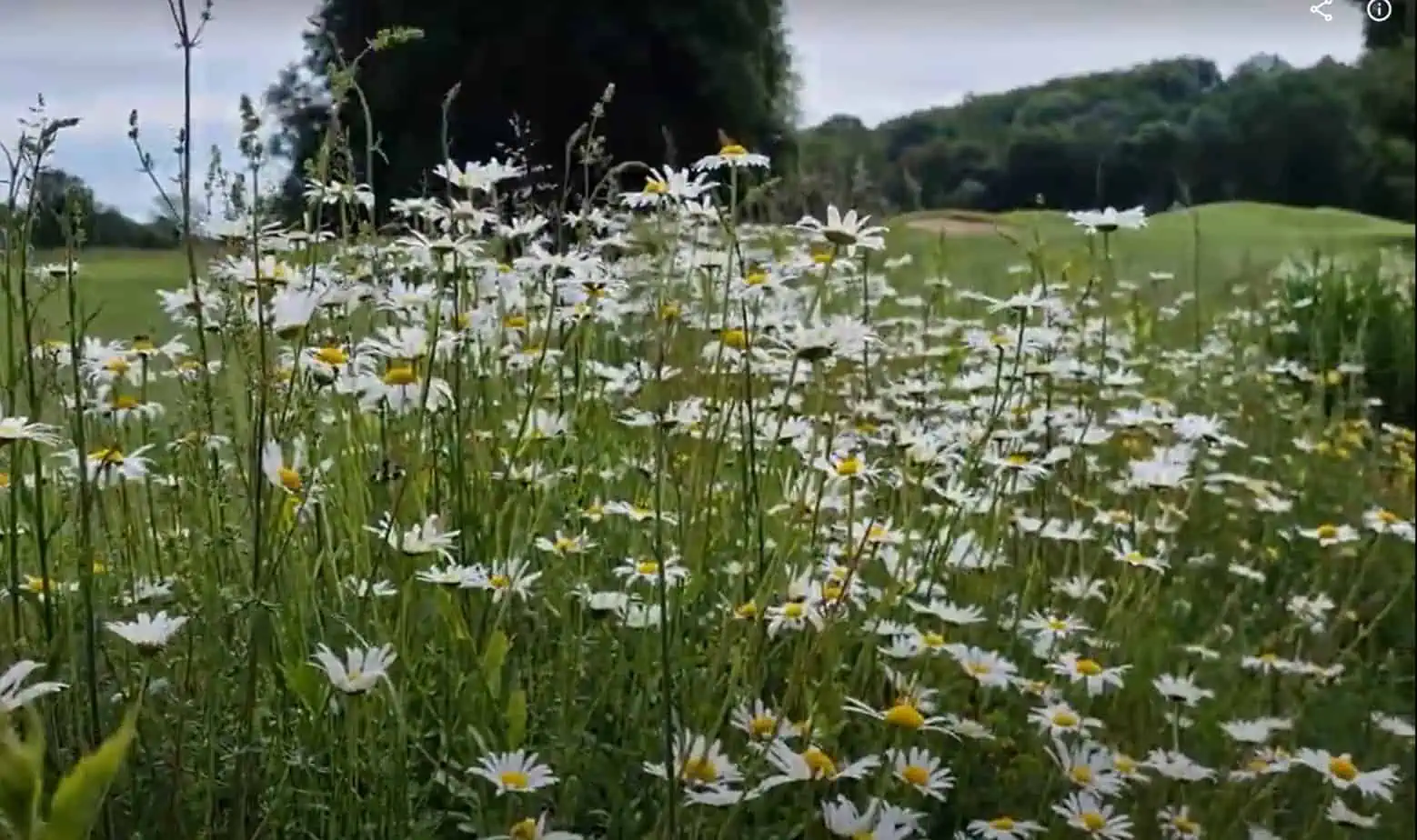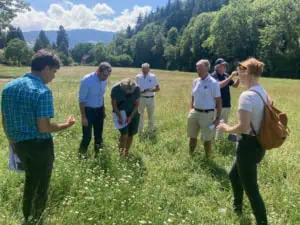ECJ reprimands Germany: More protection for flowering meadows
Meadows are valuable. But in Germany, more effort is needed to preserve them. This is the key message of a ruling by the European Court of Justice on November 14, which reprimanded the Federal Republic of Germany. In many regions with so-called lowland meadows or mountain meadows, there is too much fertilization and too much mowing. According to the highest European court for administrative law, the size of high-quality areas is decreasing. According to the ECJ, Germany is therefore in breach of EU law. The issue primarily affects agricultural regions where grassland is intensively farmed.
The development of high-quality meadows has played an important role on Germany’s golf courses for several years. “At most golf courses, we see a fundamental willingness to manage the land in such a way that biodiversity can develop,” says Dr. Gunther Hardt, Chairman of the Biodiversity Working Group of the German Golf Association. “Of course, there must always be a lean, suitable soil for the development of a lowland meadow.”
Two examples of the outstanding development of lowland meadows can be found at Freiburg Golf Course in Baden-Württemberg and Emstal Golf Course in Lower Saxony. In both cases, the development of high-quality lowland meadows was linked to the conversion or expansion of the golf course, as FFH areas were included.
Since the redesign in 2019, the GC Freiburg has been systematically upgrading areas previously used for agriculture outside the grounds. With the help of seed taken from another high-quality meadow on the golf course and transferred, attractive meadows have already been created in the previously species-poor areas. Their development is regularly monitored by the local nature conservation authorities, who have set the guidelines for maintenance management.
At GC Emstal, a lowland meadow has been created along the Ems river at holes 6 and 7. NABU Lingen has identified species such as meadow alyssum, heath carnation and true bedstraw, of which the heath carnation is considered particularly worthy of protection.
Lowland meadows require poor soils and, therefore, special care. Fertilization or too frequent mowing are taboo here. Mulching, in which the mown grass is left lying around, is also not recommended because the soil then automatically contains nutrients again.
Subscribe to our newsletter!
News & trends about sustainability in golf
As positive as the results at Freiburg GC and Emstal GC are, the development of lowland meadows for golf courses is generally not easy. The Bavarian Bird Protection Association, which advises participating golf courses on the development of high-quality areas as part of the Bavarian Flowering Pact with the Bavarian Golf Association and the Bavarian Ministry of the Environment, has found that there is often a lack of suitable mowing equipment.
The German Greenkeeper Association, which recently surveyed on mulching, identified further obstacles: more than half of those surveyed who mulch their meadows did not know “what to do with the material”. Around 40 % lacked manpower. Nevertheless, 55.8 % of greenkeepers said they would remove the mown material. For more than 50 %, the main reason for this was the requirements of the golf course permit. However, 50 % also stated that they wanted to promote biodiversity. However, it should be noted that only 35 greenkeepers took part in the survey, and only 18 completed it in full.
There is therefore no data on the vast majority of the more than 700 German golf courses.
So, how is it possible to systematically improve the areas? Hardt refers to two points at this point: “Many golf courses lack knowledge about their licensing requirements. These need to be checked first.” Golf courses participating in the German Golf Association’s Golf & Nature program do this automatically. “The second factor is certainly an increase in basic knowledge,” says Hardt. Here, programs such as Lebensraum Golfplatz or Golf Biodivers are currently increasing awareness among managers, presidents and greenkeepers. The involvement of external scientists, such as in the Golf Biodivers program, cooperation with state-wide nature conservation associations or environmental ministries, such as in Bavaria, Baden-Württemberg, Hesse, Rhineland-Palatinate, Lower Saxony-Bremen and North Rhine-Westphalia, is also contributing to this.
Another figure from the Greenkeepers Association survey shows just how great the potential is for golf courses to develop species-rich meadows: More than a third of greenkeepers have more than 20 hectares of grassland or hardrough areas at their disposal. They are not in play. In Hardt’s view, these are large areas where golf can score points regarding biodiversity. “We just need to make the whole thing more sustainable.”








